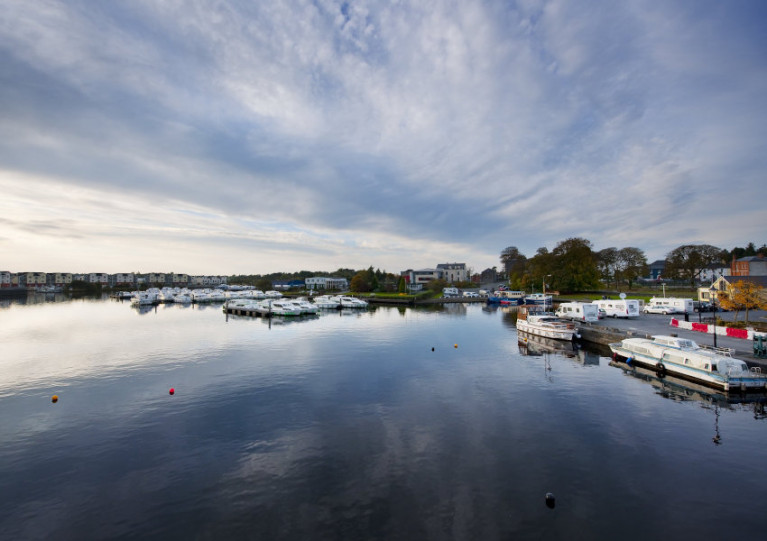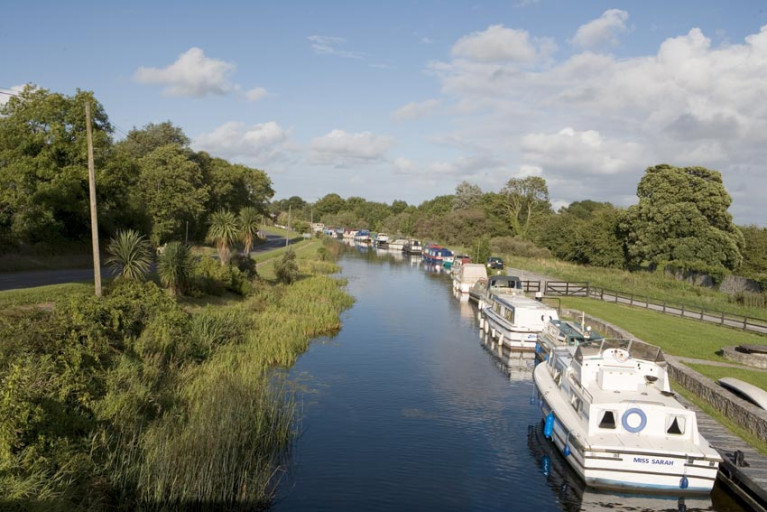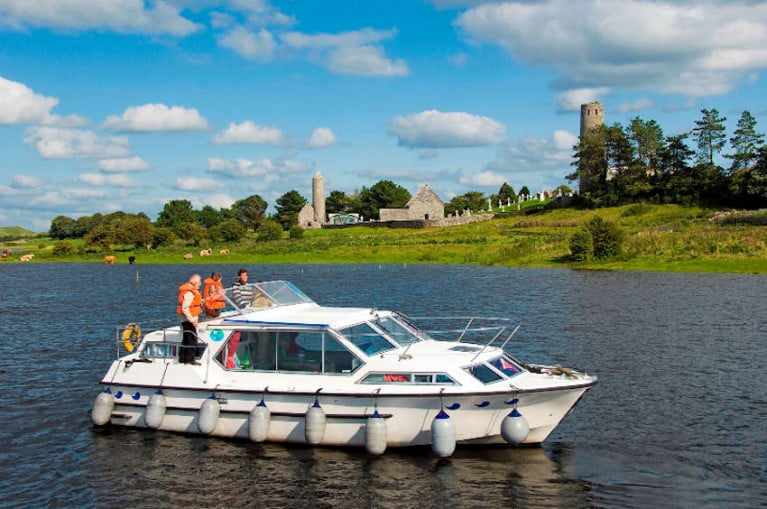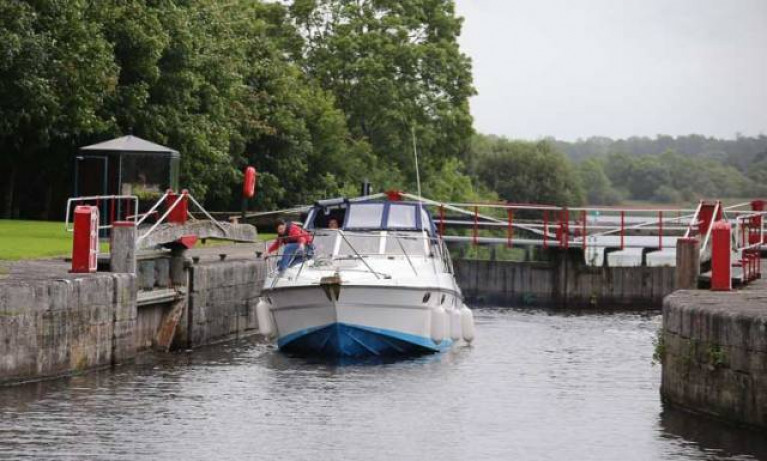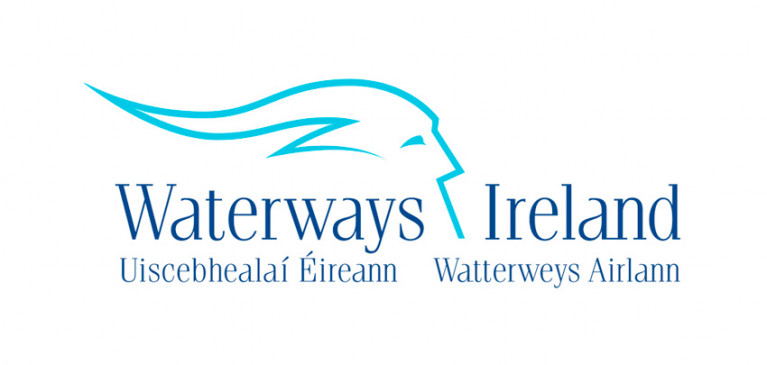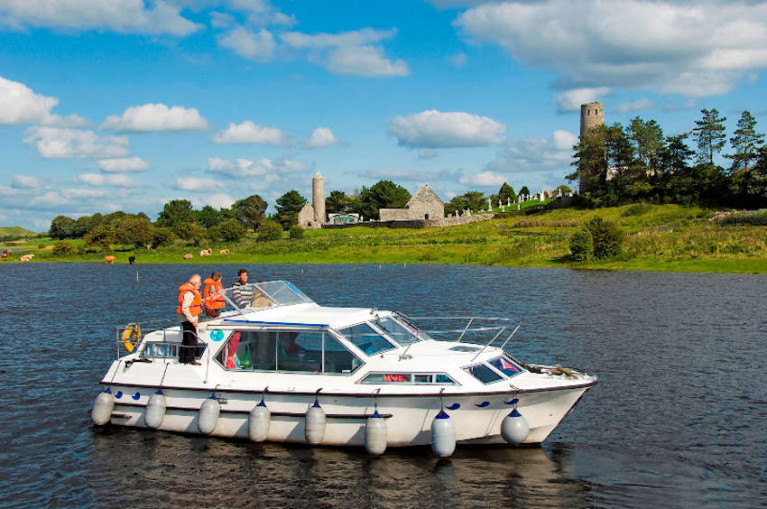Displaying items by tag: Shannon Navigation
‘Make A Break For It’ On The Shannon This Summer
Waterways Ireland and Fáilte Ireland are encouraging staycationers to ‘make a break for it’ on the Shannon Navigation this summer.
And the latter has compiled a list of all currently open places to eat along with things to see and so along the waterway.
The visitor services directory for the Shannon Navigation is available HERE.
Summer Hours For Locks & Service Blocks Reopening On Shannon Navigation & Shannon-Erne Waterway
Waterways Ireland advises masters and users of the Shannon Navigation and Shannon-Erne Waterway that locks will be operating at summer hours from this coming Monday 20 July.
Locks on the Shannon Navigation will operate from 9am to 8.30pm Mondays to Saturdays, and 9am to 6pm on Sundays. On the Shannon-Erne Waterway, the hours are 9am to 8pm daily. (See below for contact details for each lock.)
The passage fee will continue to be waived until further notice. However, a smart card will be required to operate locks on the Shannon-Erne Waterway at all times; these may only be purchased in advance from Waterways Ireland’s online shop or from designated retail outlets along the waterway.
Work is also ongoing to reopen the service blocks - toilets and showers — at all locations along both waterways. Each is undergoing deep cleaning before reopening, and a comprehensive daily cleaning rota is being set up.
Reopening is on a phased basis with blocks at Lough Key and Carrick-on-Shannon the first to open on Monday.
It’s expected the rest — including Boyle Harbour, Dromod Harbour, Drumshanbo Lock, Portrun, Lecarrow, Ballinasloe, Scarriff and Killaloe — will be reopened throughout the week, with all service blocks abatable by Friday 24 July.
Users must comply with coronavirus protocols and HSE guidelines at all times when making use of these facilities.
Shannon Navigation lock-keepers are available at the following numbers (all +353):
- Lough Allen Canal – 071 964 1552
- Clarendon Lock - 071 966 7011
- Albert Lock - 071 963 7715
- Rooskey Lock - 071 963 8018
- Tarmonbarry Lock - 043 332 6117
- Athlone Lock - 090 649 2026
- Poolboy Lock - 090 964 4938
- Victoria Lock - 057 915 1359
- Portumna Bridge - 090 974 1011
- Ardnacrusha - 061 344 515
- Sarsfield Lock - 087 797 2998
Should any assistance be required on the Shannon-Erne Waterway, use the following contacts:
- Lock 1 - +44 286 7748976
- Ballyconnell Waterway Patroller - +353 87 2603662
- Ballinamore Waterway Patroller - +353 87 2602478
- Kilclare Waterway Patroller - +353 87 2603663
- Lock 16 - +353 87 2608569
- Carrick-on-Shannon Office - +353 71 9650562
For further information on the reopening of the navigation please visit www.waterwaysireland.org
Waterways Ireland advises masters and owners of vessels that low water levels exist on the upstream approaches to Meelick Weir and Victoria Lock, north of Portumna on the Shannon Navigation.
Water levels are currently up to 45cm below summer levels as weir boards are out at Meelick Weir, which creates a draw-down of water levels in the area.
Masters of vessels, particularly those with deep drafts, are advised to navigate with additional caution and to remain within the navigation at all times.
Locks will reopen for longer and winter mooring will end on the Shannon Navigation from Monday 29 June, Waterways Ireland has announced.
Following this past week’s changes in the wake of phase two of Ireland’s coronavirus recovery roadmap, daily lock operating hours will be extended to 6pm on the Shannon.
As previously reported, electricity and water services have been reconnected, and normal pump-out facilities are available.
However, Waterways Ireland service blocks will remain closed for the time being across its network of inland waterways.
And the five-day mooring rule will be in force from Monday 29 June. Boaters to not need to travel to move their vessel before this date.
Waterway users, whether on the water on on towpaths, are reminded to continue observing social distancing protocols — at least two metres from other people — and to stay within 20km of home until travel restrictions are relaxed with the start of phase three.
Waterways Ireland has provided updated roadmaps for reopening in the Republic of Ireland and Northern Ireland respectively.
Waterways Ireland advises masters and owners of vessels that drilling and site investigation works will take place on the Shannon Navigation in the vicinity of Athlone Marina from this Wednesday 27 to Monday 31 May.
The drilling will take place from a barge. A safety boat will be in attendance at all times. Master of Vessels are requested to proceed with additional caution when in the vicinity of the works.
The advisory comes as water levels across the entire Shannon Navigation are currently classed as at or below ‘ordinary summer levels’ which requires extra caution, as previously reported on Afloat.ie.
The public consultation on the draft Shannon Tourism Masterplan and Environmental Report will close at 4pm this coming Wednesday 22 April.
Members of the public can review all the documents online and make their submission through the online survey.
The list of documents available to view are an Executive Summary, the draft Shannon Tourism Masterplan, a baseline study for the Masterplan, the Environmental Report, and AA Screen Report and Natura Impact Report.
This consultation is the next stage in an 18-month process to create a definitive document to support the development of tourism along the Shannon corridor.
Led by Waterways Ireland, with Fáilte Ireland, the steering group and working groups engaged representatives from Cavan, Leitrim, Roscommon, Longford, Offaly, Galway, Tipperary, Clare, Westmeath and Limerick county councils – which are all stakeholders in the longest of Ireland’s inland waterways.
8,400 Boats On Shannon Navigation Shows Big Demand For Mooring & Services, Says Tourism Masterplan
The Shannon Navigation plays hosts to some 8,400 boats, according to the draft tourism masterplan currently open for public consultation.
And the figure of predominantly private leisure vessels far exceeds the number of berthing spaces, which total 4,500 across 58 locations on the inland waterways between Limerick and Lough Allen.
“While the demand for mooring outweighs supply, there are variations across the navigation in the levels of demand,” the draft adds.
It goes on to state that lock passage data implies an increase of 2,800 boat passages — from 42,700 to 45,500 — in the five years between 2014 to 2018.
And it also suggests a review of shore-based service block provision to take account of customer requirements and consider the use of ‘smart’ technologies to enhance their experience.
The Draft Shannon Tourism Masterplan is a joint initiative of Waterways Ireland and Fáilte Ireland and is part of an 18-month strategy to develop tourism along the Shannon corridor over the next decade to 2030.
As previously reported on Afloat.ie, the consultation will continue amid the latest Covid-19 restrictions, with stakeholders encouraged to engage online.
Albert Lock & Jamestown Canal Reopen On Shannon Navigation
Waterways Ireland advises masters and owners of vessels on the Shannon Navigation that Albert Lock has been reopened to navigation following successful replacement of lock gates.
In addition, the Jamestown Canal in Co Roscommon where the lock is located has also been reopened to navigation following a lowering of flood levels.
All other inland waterways facilities currently closed following on from the recent and ongoing flood event will remain closed until further notice.
Waterways Ireland advises all masters of vessels and water users that the flood levels are receding on the Shannon, Erne, Barrow and Lower Bann inland waterways.
Operations staff are now preparing the jetties, quays, slipways and facilities for reactivation as the floods recede.
It is anticipated that it will take up to three weeks for all jetties, quays, slipways and facilities to be fully operational.
Masters of vessels and water users should be aware that surfaces may be slippery, access to jetties can be difficult as gangways and pontoons are elevated, and flood damage may be encountered in some locations.
All should proceed with additional caution while the clean-up work is ongoing.
Waterways Ireland has announced the opening of a public consultation on the Draft Shannon Tourism Masterplan and Environmental Report today, Wednesday 4 March.
The consultation documents will be available to the public both online and in the 10 county council offices along the Shannon and Shannon-Erne inland waterway corridors, and the consultation will remain open until Wednesday 22 April at 4pm.
The list of documents available to view are an Executive Summary, the draft Shannon Tourism Masterplan, a baseline study for the Masterplan, the Environmental Report, and AA Screen Report and Natura Impact Report.
Submissions can be made by completing an online survey. Surveys are also available at the host locations listed on the Waterways Ireland website and can be posted to Waterways Ireland’s Western Regional Office in Scariff, Co Clare.
The public consultation is also taking place in Northern Ireland, with documents available to view in the Waterways Ireland headquarters in Enniskillen. Relevant additional links include the NI Environmental Report and Habitats Regulations Assessment.
This consultation is the next stage in an 18-month process to reposition the combined Shannon Navigation and Shannon-Erne Waterway as a key tourism destination within Ireland’s Hidden Heartlands, identifying world class visitor experiences based on the region’s natural and cultural assets.
The Shannon Tourism Masterplan sets out “a bold and integrated framework for sustainable tourism development along the Shannon and Shannon-Erne”, Waterways Ireland says.
SLR Consulting and partners were commissioned to develop this Tourism Masterplan for the Shannon by Waterways Ireland in association with Fáilte Ireland and with the support of the 10 local authorities adjoining the River Shannon and Shannon Erne Waterway.
Once the public consultation is complete, submissions will be reviewed and a final draft of the document issued.



























